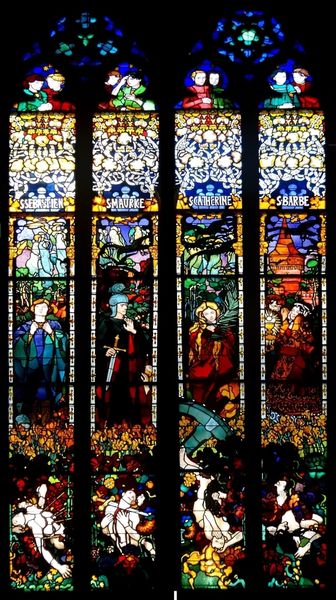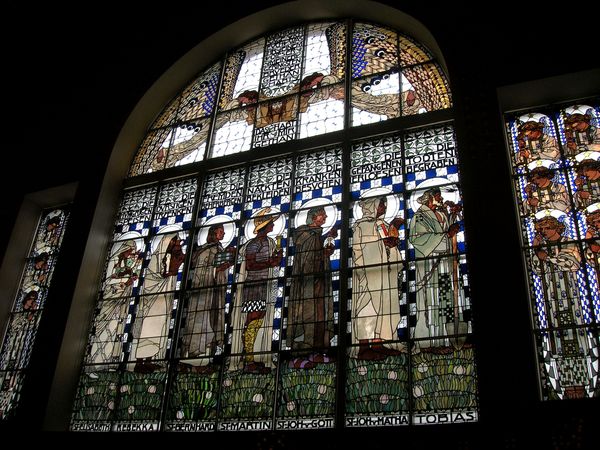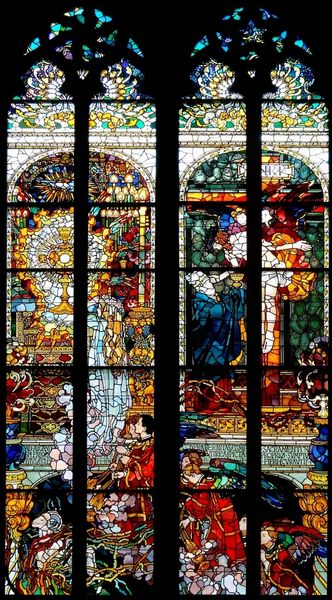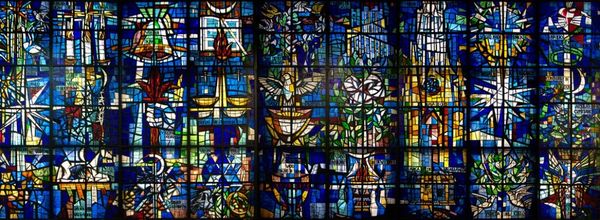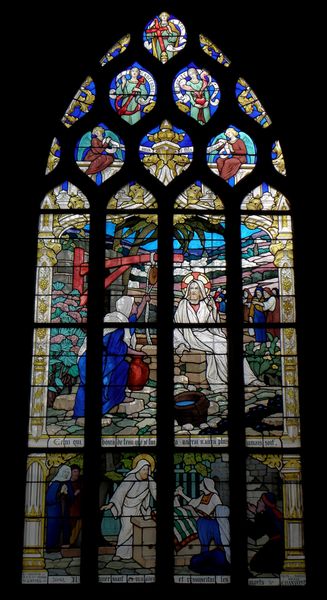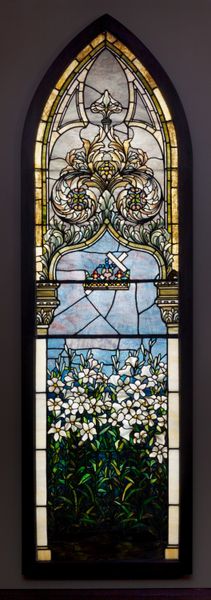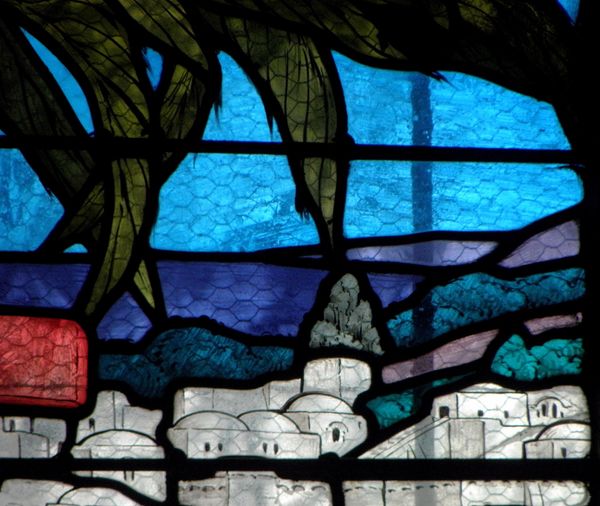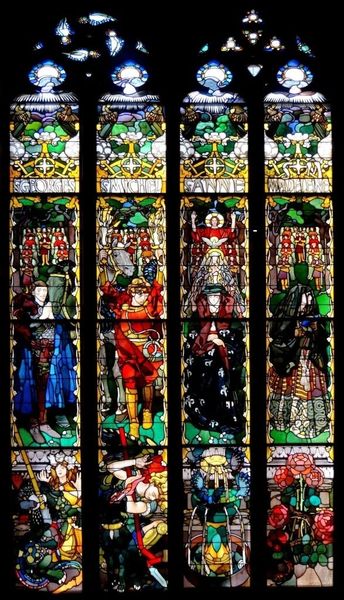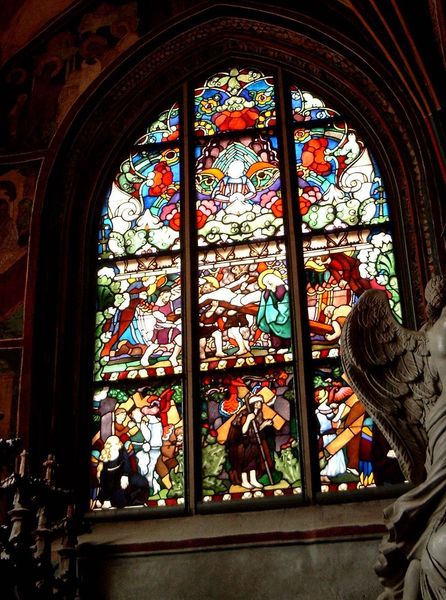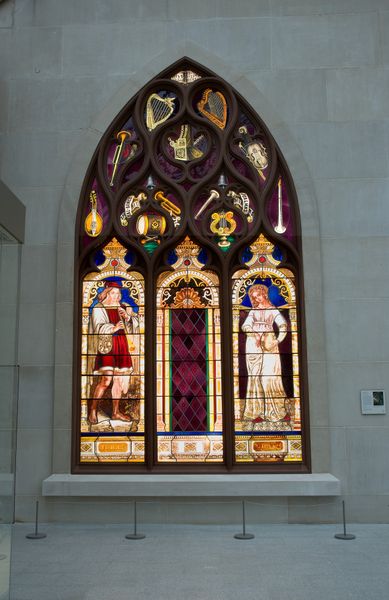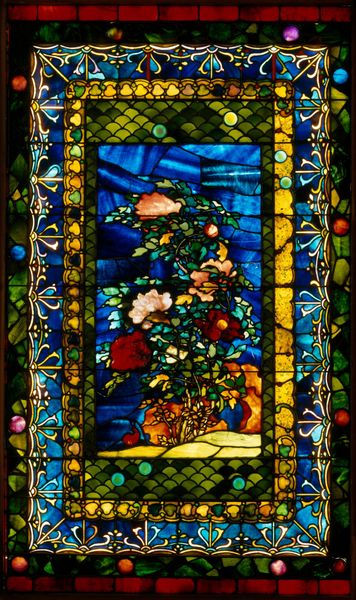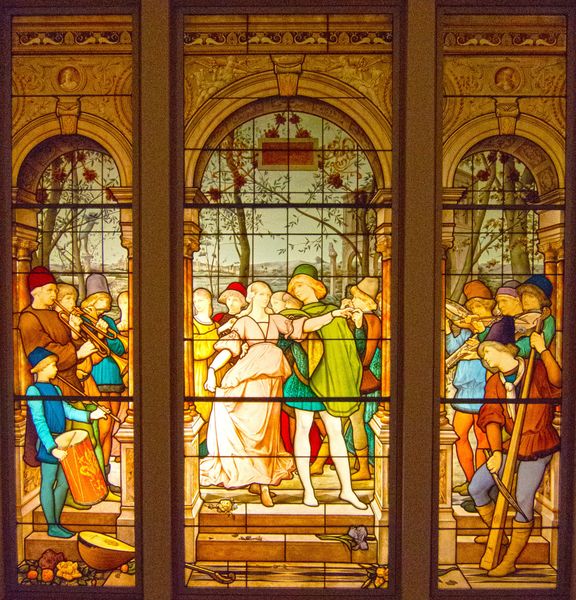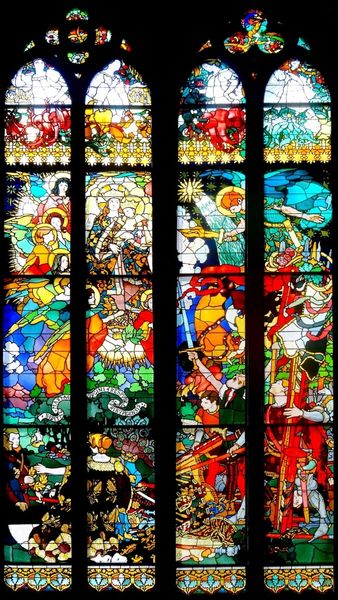
Copyright: Public domain
Curator: This piece shimmers with storytelling! It is Józef Mehoffer’s stained glass window, "Allegory of Saving", created in 1933. It just seems so…illuminated, doesn’t it? What's your take on it? Editor: There's definitely a fascinating tension here. The piece depicts an almost medieval scene with these children surrounding a central figure who holds what seems to be a strongbox—almost like some historical reenactment—juxtaposed with those very rigid geometric compositions. It's quite a strange visual narrative, what’s your reading of it? Curator: It sings to me of care, protection and the sweetness of labour. Those bees adorning the lower panel are so prominent. Bees embody industry, community, that busy buzz leading to a honeyed outcome. The children gathering are, perhaps, guardians of future prosperity. I find the mood warm, comforting even. Editor: The bees could also be interpreted more critically; the hive mind being emblematic of a more authoritarian regime or an ideology of compulsory work and obedience. Considering it was produced in 1933—right on the cusp of some very dark socio-political movements—how do we unpack the history? Do we praise Mehoffer’s visual poetry, or investigate the unsettling socio-economic context? Curator: Must it be one or the other? To me, that duality, that delicate dance between interpretation and understanding, is the heartbeat of art! I wonder what would ripple in each observer when gazing at the interplay of those gem-like colours through the glass. Imagine, if you can, the light flooding through each panel, painting new hues with the passing hours… Editor: Yes, there is an undoubtedly enchanting quality to stained glass. It also reminds us that this wasn't purely decorative; in a time before mass literacy, windows told biblical stories or illustrated histories. They visually instructed their communities, especially for those excluded or alienated by the dominance of traditional religious canons. Perhaps Mehoffer seeks to offer protection through representation? Curator: Exactly! And now it invites us to protect its stories, not just from time or interpretation but from narrow visions. Thank you, it’s left me tingling with all sorts of curious wonder. Editor: Likewise. It is crucial that, moving forward, we explore more intersectional analyses when assessing artwork; by addressing these questions and interrogating the context in which an artwork was made we move into a richer and more thorough discussion about its lasting impact on society.
Comments
No comments
Be the first to comment and join the conversation on the ultimate creative platform.

